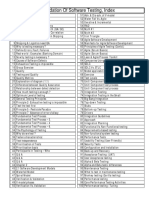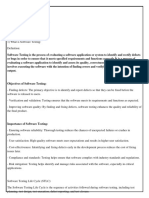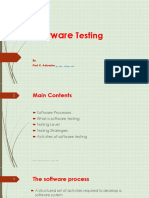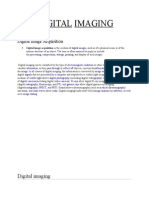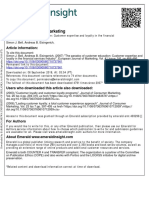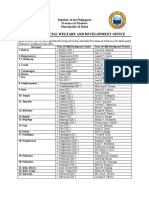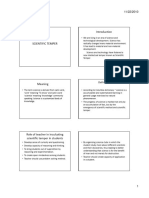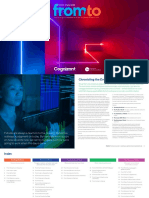0% found this document useful (0 votes)
70 views5 pagesSoftware Testing Foundation
The document discusses the fundamentals of software testing, including why testing is necessary, testing objectives, principles, and processes. It covers testing throughout the software development life cycle, including static and dynamic techniques. Test design, management, and support topics are also addressed at a high level, such as test planning, tools, and configuration management.
Uploaded by
Vladimira IlievaCopyright
© © All Rights Reserved
We take content rights seriously. If you suspect this is your content, claim it here.
Available Formats
Download as DOCX, PDF, TXT or read online on Scribd
0% found this document useful (0 votes)
70 views5 pagesSoftware Testing Foundation
The document discusses the fundamentals of software testing, including why testing is necessary, testing objectives, principles, and processes. It covers testing throughout the software development life cycle, including static and dynamic techniques. Test design, management, and support topics are also addressed at a high level, such as test planning, tools, and configuration management.
Uploaded by
Vladimira IlievaCopyright
© © All Rights Reserved
We take content rights seriously. If you suspect this is your content, claim it here.
Available Formats
Download as DOCX, PDF, TXT or read online on Scribd
/ 5



